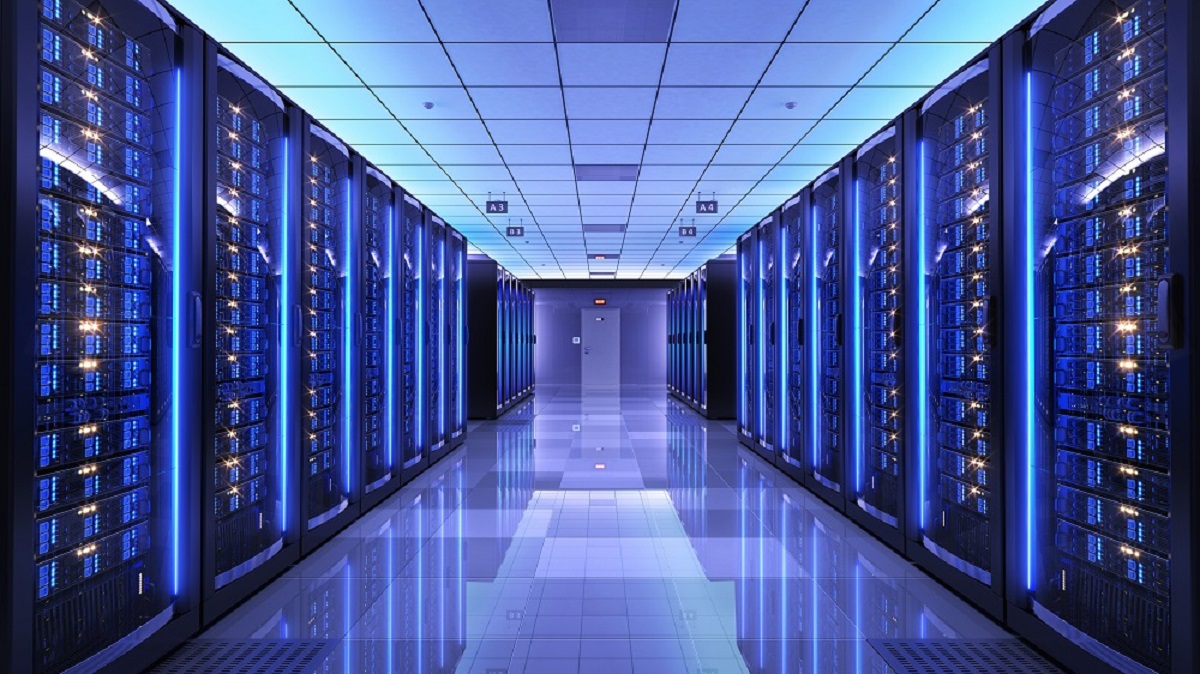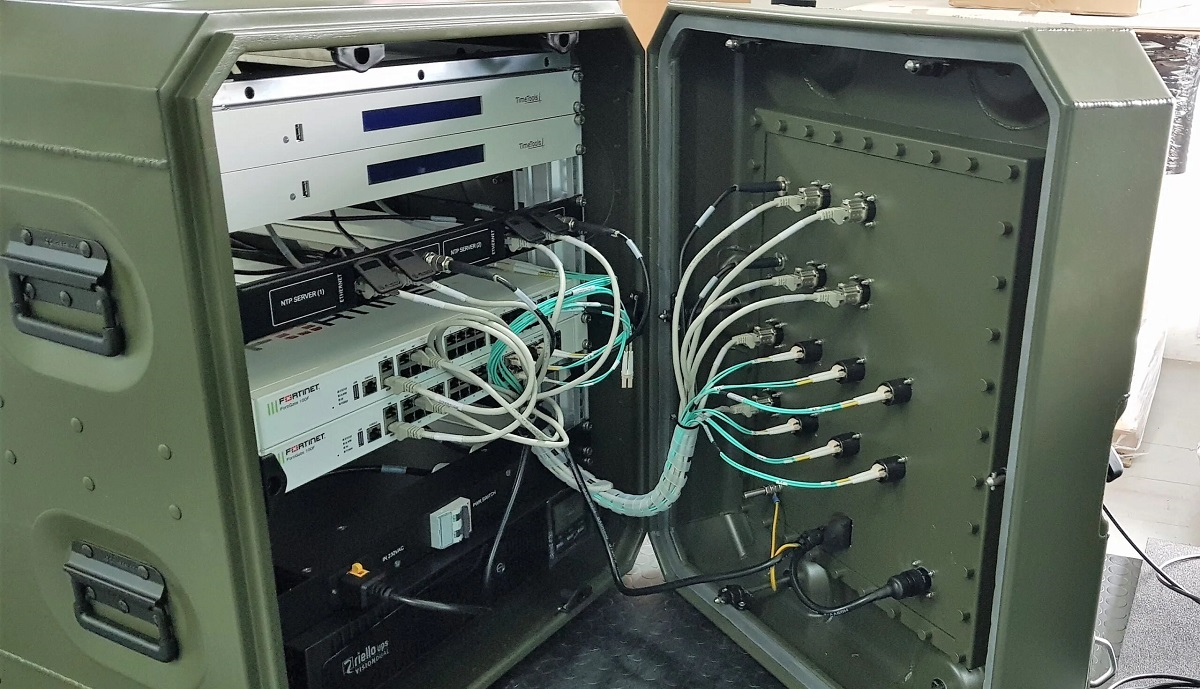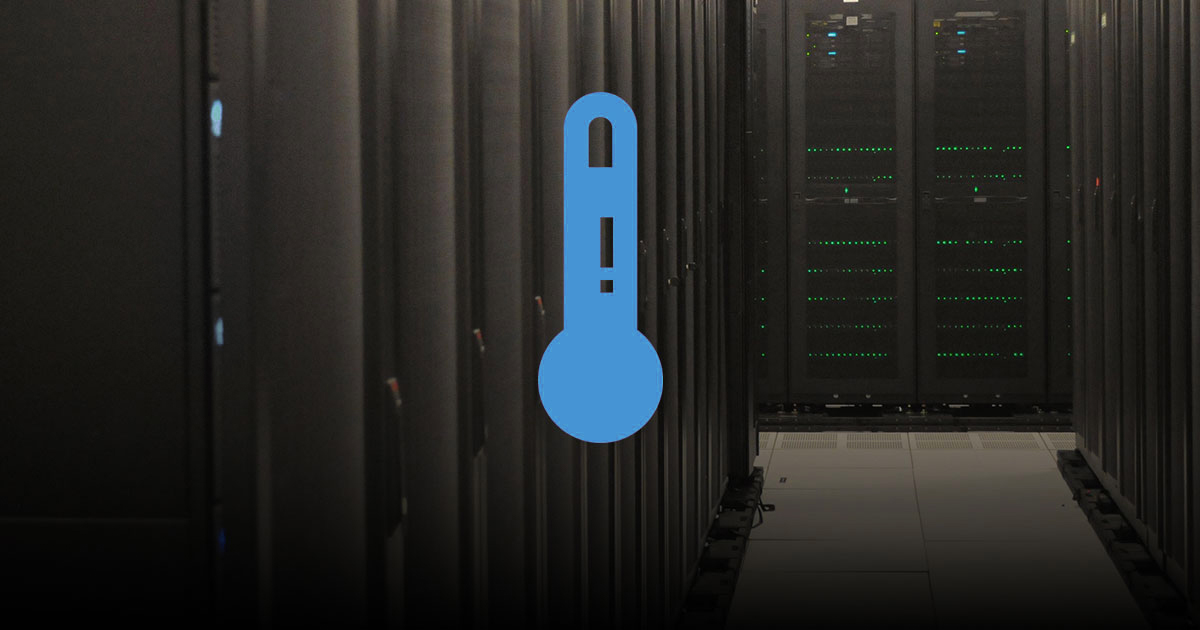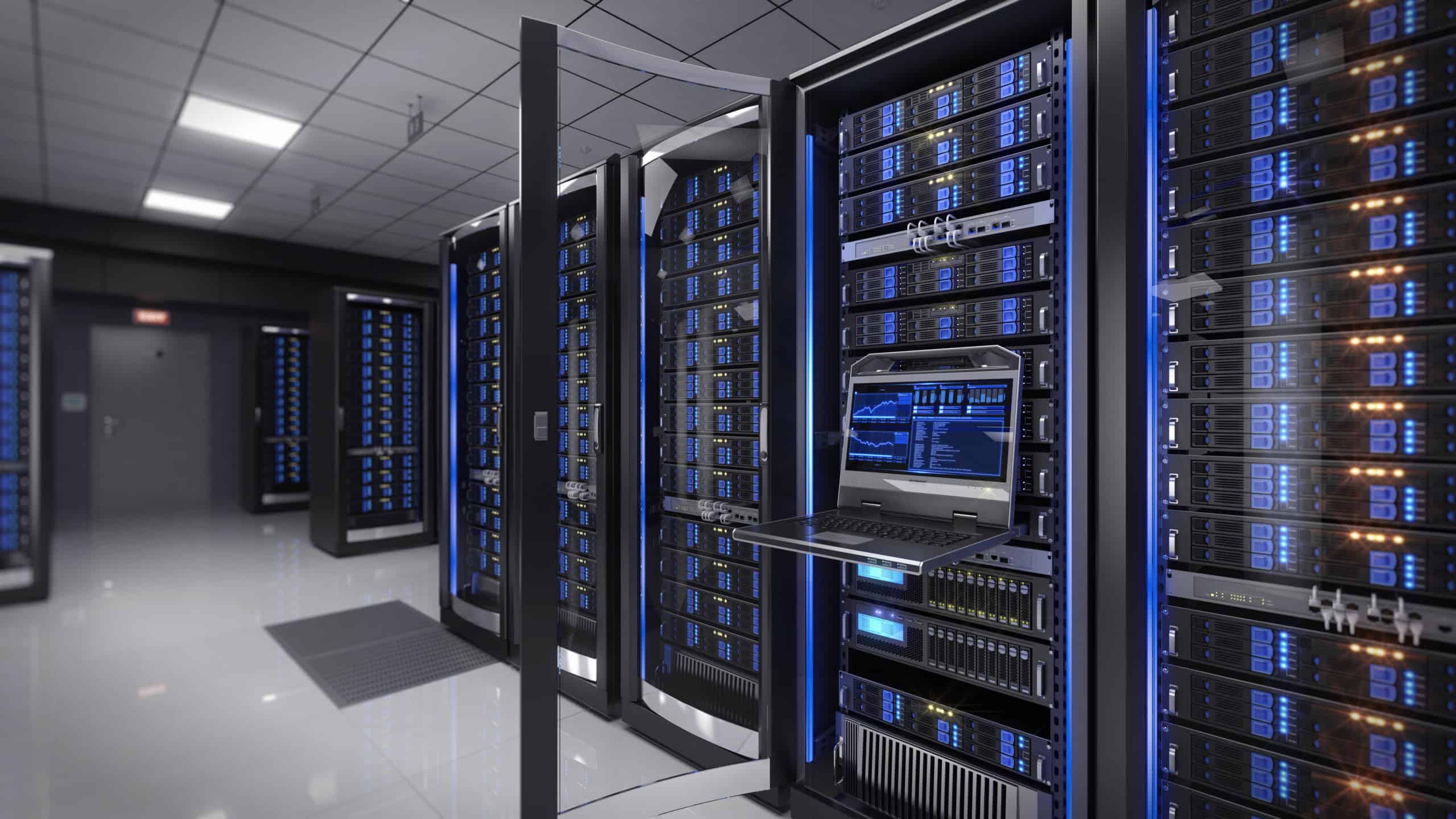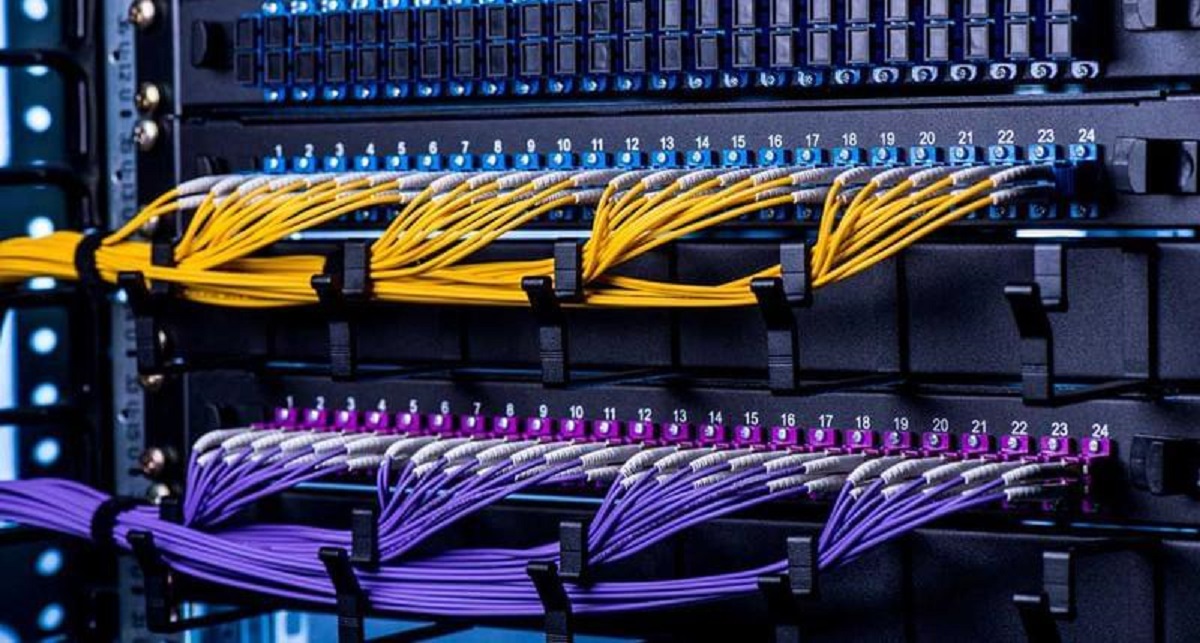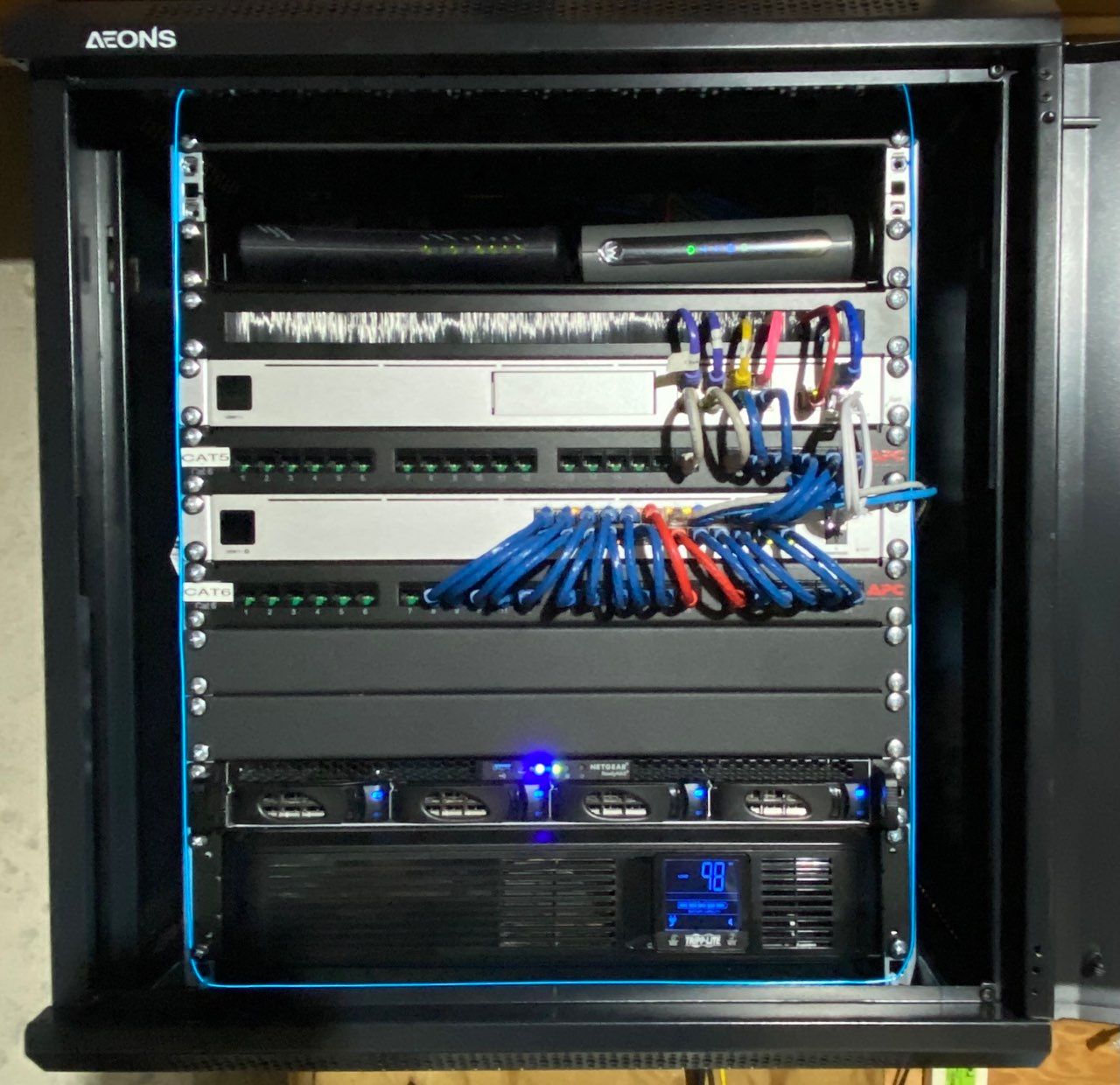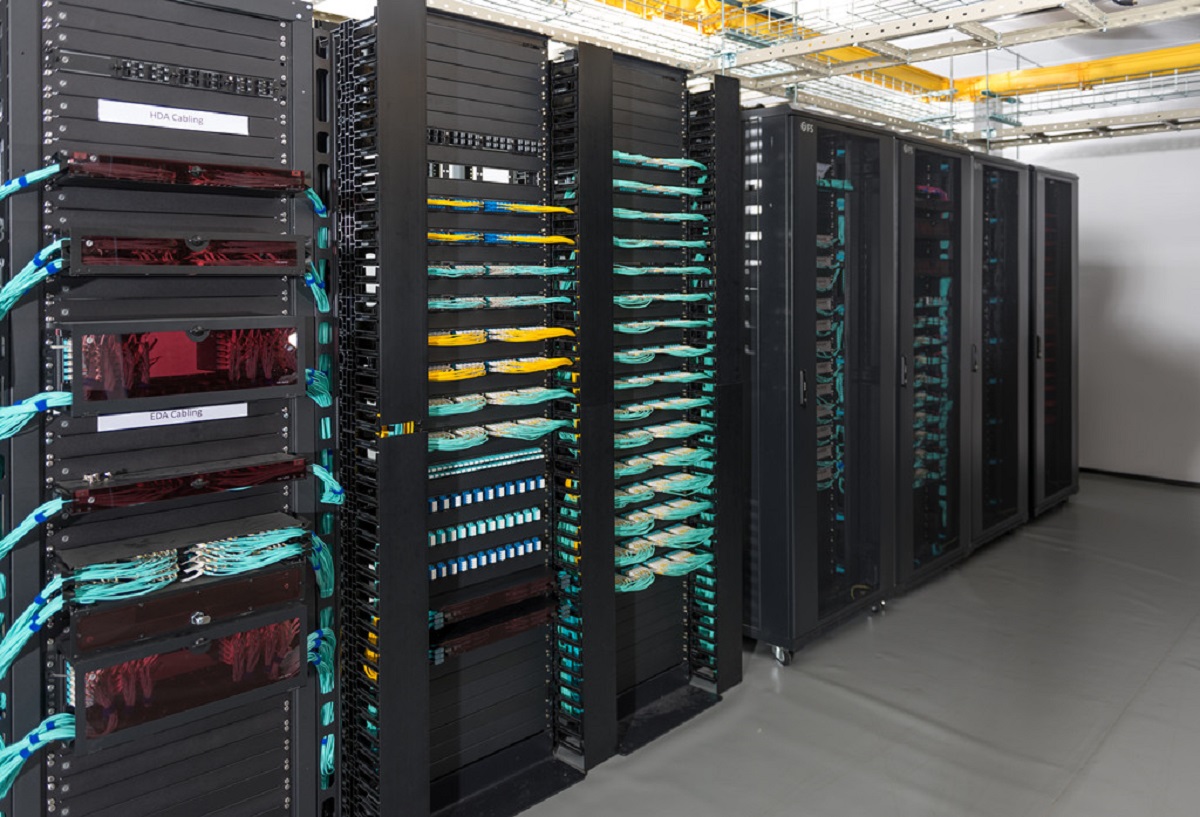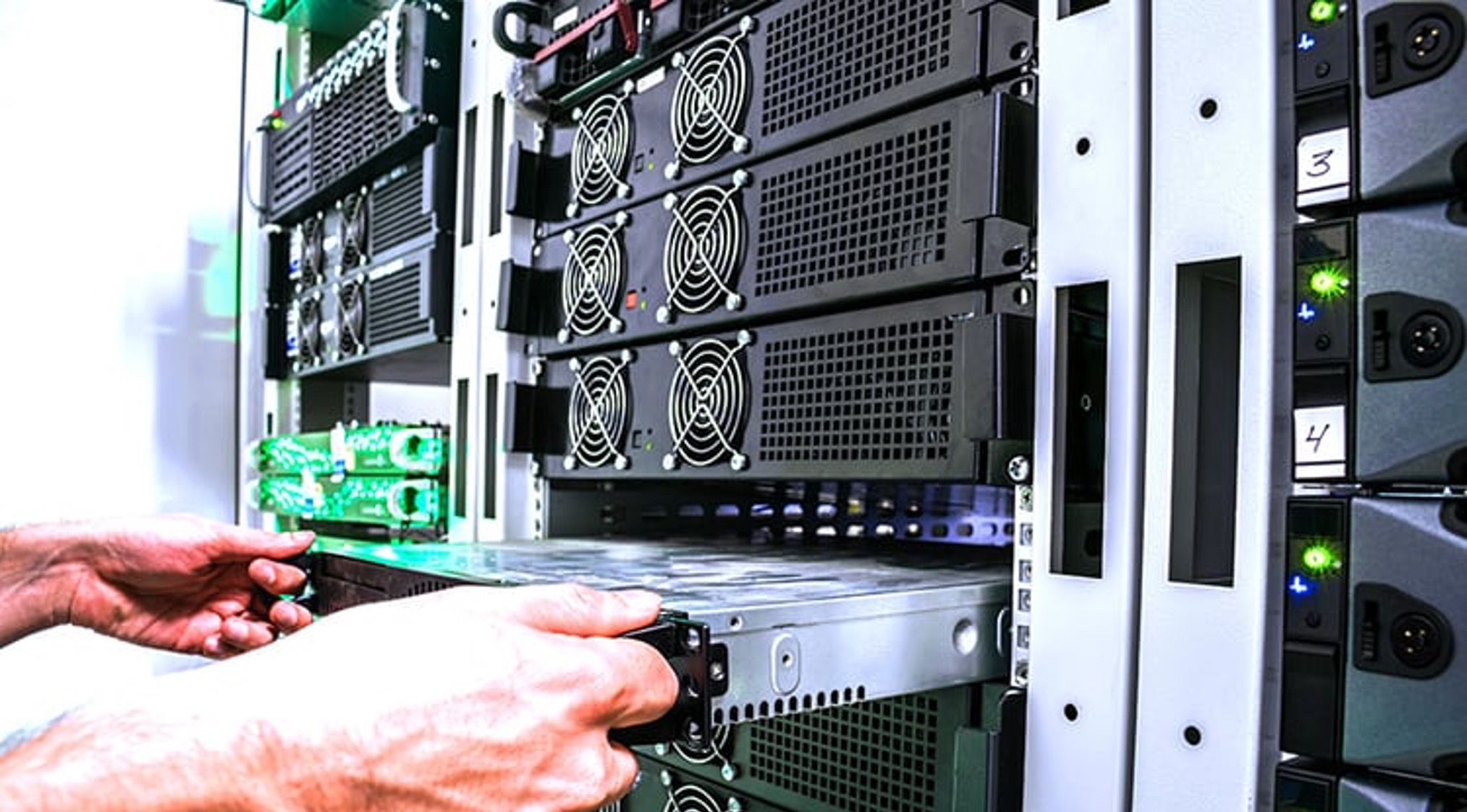Introduction
A server rack serves as the central hub for storing and organizing critical equipment and devices that power a company’s IT infrastructure. From servers and switches to routers and storage devices, server racks play a vital role in housing these essential components. However, one crucial factor that often goes unnoticed is the temperature within the server rack environment.
Maintaining the proper temperature within a server rack is crucial to ensure optimal performance and longevity of the equipment. Without adequate temperature control, servers can overheat, resulting in reduced efficiency and potential system failures. On the other hand, excessively low temperatures can also lead to issues such as condensation and increased energy consumption.
In this article, we will explore the importance of temperature control in server racks and discuss the optimal temperature range. We will also delve into the factors affecting server rack temperature and explore various cooling methods available to keep the temperature within the desired range. Additionally, we will highlight the benefits of maintaining the correct temperature and the risks associated with inadequate temperature control. Lastly, we will discuss how to monitor server rack temperature effectively.
Importance of Temperature Control in Server Racks
Temperature control is of utmost importance in server racks due to the sensitive nature of the equipment housed within them. Servers generate a significant amount of heat during regular operation, and if not properly managed, this heat can have detrimental effects on their performance, reliability, and lifespan.
One of the main reasons for maintaining optimal temperatures in server racks is to prevent overheating. When servers operate at high temperatures, their internal components, such as processors, memory modules, and hard drives, are at risk of malfunctioning. Overheating can cause performance degradation, random reboots, and even permanent hardware damage. In extreme cases, it can lead to complete system failure, resulting in costly downtime and potential data loss.
Furthermore, high temperatures can increase the energy consumption of servers. When servers run hot, their cooling fans have to work harder to dissipate the heat, consuming more electricity. This not only adds to the operational costs but also puts unnecessary strain on the overall cooling infrastructure.
Conversely, excessively low temperatures can also pose problems. Suboptimal temperatures can result in condensation, leading to moisture build-up and potential damage to electronic components. Moreover, maintaining a server room at lower temperatures than necessary can significantly impact energy efficiency and increase operating costs.
Effective temperature control in server racks ensures that the optimal operating conditions are maintained, maximizes the lifespan of the equipment, and reduces the risk of system failures and downtime. By maintaining a consistent and appropriate temperature range, businesses can ensure the smooth operation of their IT infrastructure, improve the reliability of their systems, and minimize unnecessary expenses.
Optimal Temperature Range for Server Racks
Determining the optimal temperature range for server racks is crucial in ensuring the reliable and efficient operation of the equipment. The recommended temperature range for server racks is typically between 68 to 77 degrees Fahrenheit (20 to 25 degrees Celsius).
Operating within this temperature range helps maintain the stability of the servers and prevents the risk of overheating or excessive cooling. By staying within this range, businesses can optimize energy efficiency and reduce the chances of equipment failure.
It’s important to note that the optimal temperature range may vary slightly depending on the specific manufacturer’s recommendations for the server hardware. Therefore, it’s always a good practice to consult the equipment’s documentation or contact the manufacturer for the recommended temperature range to ensure compliance.
Another factor to consider is the temperature distribution within the server rack. Servers located at different positions within the rack may experience variations in temperature due to airflow patterns and proximity to cooling elements. To mitigate this, it’s essential to ensure proper airflow management, such as arranging the servers in a way that allows for adequate air circulation and utilizing cooling solutions strategically.
In addition to the overall temperature range, it’s also important to monitor and control humidity levels in the server room. The recommended humidity range for server racks is typically between 45% to 55% to prevent the risks of excessive moisture or static buildup that can damage the equipment.
It’s worth noting that these temperature and humidity ranges are guides, and slight deviations may be acceptable, as long as the servers remain within the manufacturer’s specified environmental tolerances. However, it’s important to closely monitor the temperatures and humidity within the server racks to ensure they remain within the acceptable limits and adjust cooling solutions accordingly if necessary.
By maintaining the optimal temperature and humidity ranges within server racks, businesses can improve the overall performance, reliability, and longevity of their IT infrastructure, ultimately minimizing the risk of system failures and downtime.
Factors Affecting Server Rack Temperature
Several factors can influence the temperature within a server rack environment. Understanding these factors is crucial in effectively managing and controlling the temperature to ensure optimal performance and prevent equipment damage. Here are some of the key factors that can impact server rack temperature:
- Room temperature: The ambient temperature of the room where the server rack is located has a significant impact on the temperature within the rack. High room temperatures can increase the heat load on the servers, while excessively low temperatures can lead to additional energy consumption for heating the room.
- Ventilation and Airflow: The airflow within the server rack is essential for dissipating heat generated by the servers. Proper ventilation design, including the location and type of cooling fans, air conditioning units, and the arrangement of servers, plays a crucial role in maintaining optimal temperatures.
- Rack Density: The density of equipment within the server rack can affect temperature. High-density racks with a larger number of servers generate more heat, requiring more robust cooling solutions to maintain optimal temperatures.
- Cooling Infrastructure: The cooling infrastructure, such as air conditioning units, cooling fans, and liquid cooling systems, plays a vital role in regulating server rack temperature. The efficiency and capacity of the cooling systems can determine how well the heat is managed and the overall temperature stability within the rack.
- Hot Spots: Certain areas within the server rack may experience higher temperatures than others. These hot spots could result from equipment positioning, inadequate airflow, or component-specific heat generation. Identifying and addressing these hot spots is crucial to prevent localized overheating and ensure consistent temperature distribution.
- Seasonal Changes: External factors such as seasonal changes and temperature fluctuations can affect the temperature within the server rack. It is important to monitor and adjust cooling solutions accordingly to compensate for these variations.
- Server Load: The workload and utilization of the servers can impact their heat generation. Higher server loads can result in increased heat output, necessitating more robust cooling measures to maintain optimal temperatures.
By considering and effectively managing these factors, businesses can ensure proper temperature control within their server racks, maximizing equipment performance and reliability while minimizing the risk of overheating and system failures.
Cooling Methods for Server Racks
Proper cooling is essential to maintain optimal temperatures within server racks and prevent the risk of equipment overheating. Various cooling methods are available, each with its advantages and suitability based on the specific requirements and resources available. Here are some common cooling methods used for server racks:
- Air Conditioning Units: One of the most common cooling methods for server racks is using air conditioning units (AC). AC units help regulate the temperature and humidity levels in the server room, ensuring a stable environment for the equipment. Precision AC units are specifically designed for server rooms and offer precise temperature control to maintain optimal conditions.
- Cooling Fans: Cooling fans are another popular and cost-effective cooling solution for server racks. Fans help move air across the servers, dissipating the heat generated by the components. By strategically positioning fans and optimizing airflow, businesses can effectively manage temperature and prevent hot spots within the rack.
- Liquid Cooling: Liquid cooling systems involve circulating a special coolant or refrigerant through channels or pipes attached to the servers. This method is highly efficient in dissipating heat and is commonly used in high-density server racks. Liquid cooling systems can be either water-based or utilize specialized coolants.
- Rack-level Cooling Solutions: Rack-level cooling solutions are designed to address the cooling needs of individual server racks. These solutions include rack-mounted cooling units, rear door heat exchangers, and in-row cooling units. Rack-level cooling provides localized cooling, optimizing temperature control and energy efficiency.
- Aisle Containment: Aisle containment involves using physical barriers or enclosures to separate cold and hot air paths within the server room. By containing and directing the airflow, businesses can improve cooling efficiency and prevent temperature mixing. Common aisle containment methods include hot aisle containment (HAC) and cold aisle containment (CAC).
- Elevated Floors and Raised Tiles: Raised floors with perforated tiles can help facilitate proper airflow distribution within the server room. By strategically placing tiles to allow cool air to enter and warm air to escape, businesses can optimize cooling efficiency and maintain uniform temperatures within the server racks.
It’s important to assess the specific needs of the server rack environment and consider factors such as rack density, available resources, and budget when selecting a cooling method. In some cases, a combination of cooling methods may be necessary to achieve optimal temperature control. Regular monitoring and maintenance of cooling systems are also essential to ensure their efficiency and effectiveness over time.
By employing suitable cooling methods, businesses can effectively manage server rack temperatures, ensuring the longevity and reliability of their IT infrastructure while minimizing the risk of overheating and equipment failures.
Benefits of Maintaining Proper Server Rack Temperature
Maintaining the proper temperature in server racks offers several benefits that contribute to the overall performance, reliability, and longevity of the equipment. Here are some key advantages of maintaining proper server rack temperature:
- Enhanced Equipment Performance: Proper temperature control ensures that servers and other critical equipment operate within their optimal temperature range. This allows the components to function efficiently, reducing the risk of performance degradation and improving overall system responsiveness.
- Reduced System Failures and Downtime: Overheating is one of the leading causes of server crashes, system failures, and unexpected downtime. By maintaining the ideal temperature range, businesses can minimize the risk of hardware malfunctions and mitigate potential disruptions to their operations.
- Extended Equipment Lifespan: Excessively high temperatures can accelerate the deterioration of server components and shorten their lifespan. Conversely, consistently maintaining optimal temperatures can help prolong the life of the equipment, reducing the need for frequent hardware replacements and saving costs in the long run.
- Energy Efficiency and Cost Savings: Operating servers within the recommended temperature range reduces the load on cooling systems, resulting in lower energy consumption. By minimizing unnecessary cooling requirements, businesses can reduce their electricity bills and promote environmentally friendly practices.
- Improved Data Security: Overheating can cause data loss or corruption, putting critical information at risk. By maintaining proper server rack temperatures, businesses can protect their data integrity and enhance overall security measures.
- Enhanced Employee Productivity: Excessive heat generated by servers can make the server room an uncomfortable and unhealthy environment for IT personnel and other employees who require access to the equipment. By maintaining a comfortable temperature, businesses can improve the working conditions, leading to enhanced productivity and employee satisfaction.
- Compliance with Manufacturer Recommendations: Most server equipment manufacturers provide specific temperature guidelines for optimal performance and warranty coverage. By adhering to these recommendations, businesses can ensure compliance, avoid voiding warranties, and receive consistent support from the equipment manufacturers.
Overall, maintaining proper server rack temperature offers numerous benefits, including improved equipment performance, reduced downtime, extended equipment lifespan, energy efficiency, data security, employee comfort, and compliance with manufacturer guidelines. By prioritizing temperature control, businesses can optimize the functionality and reliability of their IT infrastructure while minimizing potential risks and costs associated with overheating.
Risks of Inadequate Server Rack Temperature Control
Inadequate temperature control within server racks can pose several risks that can impact the performance, longevity, and reliability of the equipment. Failing to maintain proper temperature levels can lead to the following risks:
- Equipment Overheating: One of the primary risks of inadequate temperature control is equipment overheating. High temperatures can cause the components within servers to operate outside their optimal range, leading to reduced performance, increased error rates, and system failures.
- Increased Risk of Hardware Failure: When servers operate at elevated temperatures for extended periods, the risk of hardware failure significantly increases. Overheating can damage critical components such as processors, memory modules, and hard drives, resulting in expensive repairs or replacements.
- Downtime and Business Disruption: Server crashes caused by overheating can result in unplanned downtime, disrupting business operations and potentially impacting customer service and revenue generation. Resolving these issues can be time-consuming and costly, as it may involve troubleshooting, replacing components, or even rebuilding the entire system.
- Data Loss and Corruption: Inadequate temperature control can also increase the risk of data loss or corruption. Overheating can cause storage devices to malfunction, resulting in the loss or corruption of critical business data. This can have severe consequences, including compromised customer information, regulatory non-compliance, and damaged reputation.
- Reduced Equipment Lifespan: Excessive heat over extended periods can significantly reduce the lifespan of server equipment. Components wear out faster under high temperatures, shortening the timeframe before upgrades or replacements become necessary. Premature hardware failures can lead to unexpected expenses and disrupt long-term budgeting plans.
- Increased Energy Consumption: Inefficient temperature control can result in increased energy consumption within the server room. Servers running at higher temperatures require cooling systems to work harder, consuming more electricity and increasing operational costs. Inadequate temperature control can lead to a waste of resources and higher energy bills.
- Environmental Impact: Inefficient temperature control not only affects the operational costs but also has a negative impact on the environment. Energy waste contributes to increased carbon emissions, exacerbating the ecological footprint of the business.
To mitigate these risks, it is crucial to invest in proper temperature control measures, such as cooling systems and monitoring solutions. Regularly monitoring server rack temperatures and maintaining a consistent and appropriate range can help prevent these risks, ensuring the reliable and efficient operation of the IT infrastructure.
How to Monitor Server Rack Temperature
Monitoring server rack temperature is essential to ensure optimal performance, prevent potential issues, and take corrective actions when necessary. Here are some effective methods to monitor server rack temperature:
- Temperature Sensors: Install temperature sensors within the server rack to continuously monitor the temperature. These sensors can provide real-time temperature data, allowing IT personnel to detect any abnormal variations or potential overheating issues promptly. The data from these sensors can be integrated into a centralized monitoring system for easy access and analysis.
- Thermal Imaging: Thermal imaging cameras can be used to visualize temperature distribution within the server rack. These cameras detect and display the variations in temperature as color-coded images, helping to identify hotspots or areas with improper cooling. This method provides a visual representation of temperature patterns, allowing for targeted troubleshooting and optimization.
- Remote Temperature Monitoring: Remote monitoring solutions enable IT personnel to monitor server rack temperature from a centralized location. These solutions utilize network-connected sensors or intelligent power distribution units (PDUs) to collect temperature data and provide real-time alerts and notifications. Remote monitoring allows for proactive identification of temperature deviations and immediate response to potential issues, even when personnel are off-site.
- Environmental Monitoring Systems: Environmental monitoring systems offer comprehensive monitoring capabilities beyond temperature, including humidity, airflow, and power consumption. These systems utilize multiple sensors placed strategically within the server room to provide holistic monitoring and insights into the overall environmental conditions, assisting in optimizing cooling efficiency and identifying potential risks.
- Alerts and Notifications: Implementing an alerting system is critical for timely response to temperature-related issues. Set temperature thresholds and configure alerts to notify IT personnel via email, SMS, or web-based dashboards when temperatures exceed safe limits. This allows for immediate action, helping to prevent overheating and minimize the risk of equipment failures or system downtime.
- Data Analysis and Trending: Continuously analyze temperature data and observe temperature trends to identify patterns or potential issues. Data analysis can help identify recurring temperature fluctuations, anticipate cooling system failures, or pinpoint areas within the server rack that require additional attention. Trending analysis can also assist in optimizing cooling system performance, energy efficiency, and capacity planning.
By implementing a robust monitoring system and employing real-time monitoring, IT personnel can proactively manage server rack temperature, detect potential problems, and take preventive measures before they escalate into critical issues. Regular monitoring enhances server performance, reduces downtime risks, and contributes to the overall reliability and efficiency of the IT infrastructure.
Conclusion
Maintaining proper temperature control in server racks is paramount to ensure optimal performance, reliability, and longevity of the equipment. Inadequate temperature control can lead to overheating, increased risk of hardware failure, downtime, data loss, and increased energy consumption. On the other hand, maintaining the optimal temperature range within server racks offers several benefits, including enhanced equipment performance, reduced system failures, extended equipment lifespan, improved energy efficiency, enhanced data security, and increased employee productivity.
To ensure proper temperature control, businesses should consider factors such as room temperature, ventilation, rack density, cooling infrastructure, and seasonal changes. Implementing appropriate cooling methods, such as air conditioning units, cooling fans, liquid cooling, rack-level solutions, aisle containment, and elevated floors, can effectively manage and regulate server rack temperature. Additionally, monitoring server rack temperature through techniques like temperature sensors, thermal imaging, remote monitoring, and environmental monitoring systems allows for proactive detection of temperature deviations and timely response to potential issues.
By maintaining optimal server rack temperatures and adhering to manufacturer recommendations, businesses can optimize equipment performance, reduce downtime risks, extend equipment lifespan, minimize energy consumption, enhance data security, improve employee comfort, and ensure compliance. Proper temperature control contributes to the overall reliability, efficiency, and longevity of the IT infrastructure, resulting in significant cost savings, improved productivity, and a better user experience.







